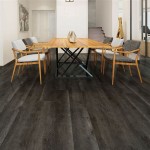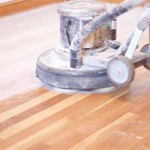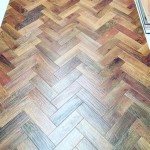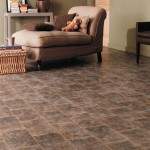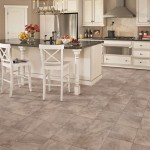How To Prep Plywood Subfloor For Vinyl Plank Flooring
Installing vinyl plank flooring is a popular choice for homeowners due to its durability, water resistance, and ease of installation. Achieving a successful and long-lasting vinyl plank floor, however, heavily relies on proper subfloor preparation. When working with plywood subfloors, certain crucial steps must be followed to ensure a smooth, level, and stable surface that will adequately support the vinyl planks. Ignoring these steps can lead to issues such as uneven flooring, plank separation, or even damage to the vinyl planks themselves. This article provides a comprehensive guide on how to properly prepare a plywood subfloor for vinyl plank flooring installation.
Understanding the Importance of Subfloor Preparation
The subfloor acts as the foundation for any flooring installation. Its integrity directly impacts the performance and longevity of the finished floor. A poorly prepared subfloor will transmit any imperfections – bumps, dips, or loose sections – directly to the vinyl plank flooring, creating an undesirable aesthetic and potentially causing structural problems. Vinyl plank flooring, while relatively forgiving, still requires a flat and solid surface to adhere to or float properly. Without adequate preparation, issues related to moisture and expansion/contraction can also arise, leading to costly repairs or premature floor replacement. Therefore, investing time and effort in properly prepping the plywood subfloor is a critical investment in the overall success of the flooring project.
Plywood is a common and generally reliable subfloor material, but it is still susceptible to issues that can compromise the integrity of the finished floor. These issues include unevenness caused by warping or settling, damage from moisture exposure, loose fasteners, and general wear and tear over time. Proper preparation addresses these potential problems, creating an ideal surface for vinyl plank installation.
Step-by-Step Guide to Plywood Subfloor Preparation
The following steps outline the process of preparing a plywood subfloor for vinyl plank flooring. Each step is crucial and should be performed carefully to ensure a successful outcome.
Step 1: Inspection and Assessment. The first step is a thorough inspection of the existing plywood subfloor. This involves visually examining the entire surface area for any signs of damage, including water stains, mold growth, warping, delamination (separation of plywood layers), or loose nails or screws. Pay close attention to areas around plumbing fixtures, exterior walls, and doorways, as these are often more susceptible to moisture damage. Use a straight edge (at least 6 feet long) and a level to check for any unevenness or dips in the subfloor. Mark any problem areas with a pencil or marker for later attention. Take photographs of any significant damage for documentation purposes.
Step 2: Addressing Moisture Issues. Moisture is a major enemy of both plywood and vinyl plank flooring. High moisture levels can cause the plywood to swell and warp, potentially damaging the vinyl planks or compromising their adhesion. Before proceeding with any other preparation steps, it is essential to address any existing moisture problems. Identify the source of the moisture (e.g., leaking pipes, poor ventilation, ground moisture) and take steps to eliminate it. Use a moisture meter to measure the moisture content of the plywood. The acceptable moisture content for plywood subfloors before installing vinyl plank flooring typically ranges from 6% to 12%, depending on the specific vinyl plank manufacturer’s recommendations. Allow the plywood to dry completely if necessary. This may require the use of dehumidifiers or fans. If significant water damage has occurred, replacing the affected sections of plywood may be necessary.
Step 3: Repairing Damaged Areas. Once any moisture issues have been resolved, the next step is to repair any damage to the plywood subfloor. This includes addressing issues such as loose nails or screws, delamination, and areas of rot or decay. For loose fasteners, drive the existing nails or screws deeper into the plywood or replace them with new ones. If the plywood is delaminating, apply a wood glue specifically designed for plywood to the affected area and clamp it until the glue is completely dry. For areas of rot or decay, remove the damaged plywood using a circular saw or other appropriate cutting tool. Cut a replacement piece of plywood to the same dimensions and thickness as the removed section. Secure the replacement piece to the surrounding joists using construction adhesive and screws. Ensure that the replacement piece is flush with the existing subfloor.
Step 4: Leveling the Subfloor. Achieving a level subfloor is crucial for preventing unevenness in the finished vinyl plank floor. Minor imperfections can often be addressed by sanding down high spots using a belt sander or orbital sander. For larger dips or uneven areas, self-leveling compound may be required. Before applying self-leveling compound, clean the subfloor thoroughly to remove any dust, debris, or loose particles. Prime the subfloor with a primer specifically designed for use with self-leveling compounds. This will help the compound adhere properly to the plywood. Follow the manufacturer’s instructions for mixing and applying the self-leveling compound. Use a gauge rake to spread the compound evenly across the subfloor. Allow the compound to dry completely before proceeding to the next step.
Step 5: Sanding and Smoothing. After repairing and leveling the subfloor, sand the entire surface to create a smooth and even surface. Start with a coarse grit sandpaper (e.g., 60-grit) to remove any remaining imperfections, such as glue residue or rough edges. Then, switch to a medium grit sandpaper (e.g., 80-grit) to further smooth the surface. Finally, finish with a fine grit sandpaper (e.g., 120-grit) to create a very smooth and even surface. Vacuum the subfloor thoroughly after each sanding pass to remove any dust or debris.
Step 6: Cleaning and Preparing for Installation. The final step in preparing the plywood subfloor is to thoroughly clean the surface and ensure that it is free of any dust, debris, or contaminants that could interfere with the adhesion of the vinyl plank flooring. Vacuum the subfloor thoroughly to remove any remaining sanding dust. Then, wipe down the subfloor with a damp cloth or mop, using a mild detergent if necessary. Allow the subfloor to dry completely before proceeding with the vinyl plank flooring installation. Check the manufacturer's instructions for the vinyl plank flooring regarding any specific primers or underlayments that may be required for installation over plywood. Apply any necessary primers or underlayments according to the manufacturer's instructions.
Key Considerations for Specific Scenarios
While the steps outlined above provide a general guide to preparing a plywood subfloor for vinyl plank flooring, certain scenarios may require additional considerations.
Existing Flooring: If the plywood subfloor is covered with existing flooring, such as tile or linoleum, it is generally best to remove the existing flooring before proceeding with the subfloor preparation. Removing the existing flooring will allow for a thorough inspection of the plywood subfloor and will ensure that any necessary repairs can be made properly. However, in some cases, it may be possible to install vinyl plank flooring over existing flooring, provided that the existing flooring is in good condition, is firmly adhered to the subfloor, and is level and smooth. Check the manufacturer's instructions for the vinyl plank flooring to determine whether it is suitable for installation over existing flooring.
Basement Subfloors: Basement subfloors are often more susceptible to moisture problems than subfloors in other areas of the home. Therefore, it is particularly important to address any moisture issues before installing vinyl plank flooring in a basement. Consider installing a vapor barrier between the plywood subfloor and the concrete slab to prevent moisture from seeping up into the plywood. Ensure that the basement is adequately ventilated to prevent the buildup of moisture. Use a moisture meter to regularly monitor the moisture content of the plywood subfloor.
Radiant Heat Systems: If the plywood subfloor contains a radiant heat system, it is important to take special precautions to avoid damaging the system during the subfloor preparation process. Consult with a qualified professional before sanding or leveling the subfloor to ensure that the radiant heat system is not damaged. Use caution when driving nails or screws into the subfloor to avoid puncturing any of the radiant heat tubing. Follow the manufacturer's instructions for the vinyl plank flooring regarding its suitability for installation over radiant heat systems.
Tools and Materials Required
Preparing a plywood subfloor for vinyl plank flooring requires a variety of tools and materials. Here is a list of the most commonly needed items:
- Straight edge (at least 6 feet long)
- Level
- Pencil or marker
- Moisture meter
- Circular saw or other cutting tool
- Wood glue
- Construction adhesive
- Screws
- Self-leveling compound
- Primer for self-leveling compound
- Gauge rake
- Belt sander or orbital sander
- Sandpaper (coarse, medium, and fine grit)
- Vacuum cleaner
- Damp cloth or mop
- Mild detergent
- Safety glasses
- Dust mask
- Gloves
The specific tools and materials required may vary depending on the condition of the subfloor and the type of vinyl plank flooring being installed. It is always best to consult with a qualified professional if you have any questions or concerns about the subfloor preparation process.
By carefully following these steps, homeowners can ensure that their plywood subfloor is properly prepared for vinyl plank flooring installation, resulting in a beautiful, durable, and long-lasting floor.

How To Prep Wood Subfloor For Luxury Vinyl Plank Flooring Beginners Fix High And Low Spots

How To Prep Wood Subfloors For Vinyl Plank Flooring

How To Prepare The Floor For Vinyl Plank Installation

Floor Prep For Beginners Installing Vinyl Plank

Complete Guide Underlayment For Vinyl Sheet Flooring

Preparing Your Sub Floor For Luxury Vinyl Plank Flooring Floors Paws

How To Prep A Subfloor Lowe S

How To Prep Floors For Luxury Vinyl Planks Nynr Refresh Challenge Casa Watkins Living

How To Prep Plywood Subfloor For Vinyl Plank Flooring Countyoffice Org

How To Prepare A Subfloor For Tile Installation The Home Depot
Related Posts

